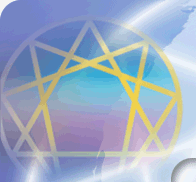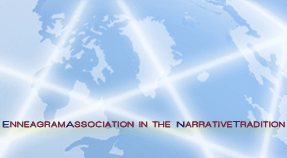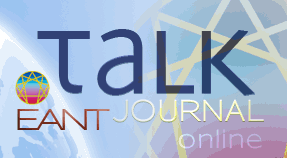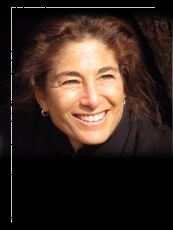



SECOND HALF OF THE INTERVIEW WITH TARA BRACH, OUR 2012 EANT CONFERENCE KEYNOTE— By Matt Ahrens, Former President, EANT and TALK Editor
Matt Ahrens: Thank you for taking the time to do this interview. Tara Brach: You’re welcome. Matt Ahrens: You wrote the book Radical Acceptance, which I bought, read, and love. I’ve listened to your talk by the same name. I love the name, where did you ever come up with the name, "Radical Acceptance?" Tara Brach: … I don’t know. I really can’t remember. I know that what’s behind the name is that I got clearer and clearer over the years that my major version of suffering had to do with a sense of “something is wrong with me” – that I was caught in a trance of unworthiness. I remember at my first retreat one of the teachers saying something like, "The boundary to what we can accept is the boundary to our freedom." MA: I remember you saying that in your talk and it gave me chills the first time I heard it. That’s it, isn’t it? TB: Yes, if in some way, if we are resisting reality, we are not free. That became a really deep, deep guide for me. If I’m even slightly at war with myself I’m contracted against the world. I’m not able to embrace this life. It had so much power for me with this particular personality set up. I don’t know if you can tell what my Enneagram type is. Mine is pretty clear, I think, it comes blaring out there. I’ll probably confess when I’m in public. [Editor’s Note: we’re not going to tell you in this article, you need to come to the conference to find out! ] MA: In our group is it one of those questions that everyone asks or admits to. It’s like a 12-Step Group, “Hi I’m Matt, I’m a Type 9….” TB: To each of us, ours is the most shameful type, of course, no question about it. MA: Absolutely. TB: Mine is really good for feelings of shame, feelings of unworthiness, and so on. [Editor’s note: don’t try to figure out her type now! Haha! ] That was what was plaguing me. I wanted to write about how the way we turn on ourselves completely obscures who we are. I got to know that particular channel of how the obscurations work. Along with shame is fear, of course. Along with shame and fear is depression, and along with shame and fear and depression is jealousy. It really is working with difficult emotions and all of the different presentations and the beliefs that go with them. The bottom line is seeing how we end up living in a trance of a self that is smaller than who we are. That’s the suffering. It’s forgetting who we are. That’s what motivated me. I could see so clearly how we turn on ourselves and that keeps us in the trance of the small self. The book was really designed to show how radical acceptance allows us to be free. I have a very large view of what acceptance is. It’s not passive. It has both wings of recognizing what is going on and the heart opening to allow. MA: My Enneagram is Type 9 for which “acceptance” is a gift; 9s tend to be accepting of others. My ego really bought into that idea, that “I’m an accepting person.” Type 9s are also an anger type -- the anger that went to sleep. TB: Wait, slow down, the anger that, what? MA: The anger that went to sleep. It’s like a dormant volcano. There’s a lot of anger underneath the surface but accepting that is very difficult. If you’re angry about something it is because something isn’t the way you want it to be. That plays against this idea of being accepting. How can you be angry about something and accepting of something? That tension creates sleepiness, sleepiness of mind. TB: That makes sense. So, what have you found for yourself that is a kind of portal for freeing that up? MA: Well, first of all, through the Enneagram recognizing that I have anger. It’s day-to-day experience. When I can recognize it, as anger, then I can see what it is that isn’t the way I want it to be, and then I can work on accepting that. Until I recognize what it is that I don’t like, I can’t really accept it. I’m in a constant state of aversion. I’m running away from the very thing that I need to be diving into. TB: Do you have to slow it down enough to truly accept that the anger is there? Does that process get slowed down? MA: It has. It certainly did when I was first beginning with it. Now I feel the sensation of it in my body and can recognize, viscerally, that I’m angry or that something isn’t right, and I can begin to relax and open up. That seems to work. TB: You aren’t resisting the anger in any way? You don’t have a subtle layer of aversion to the fact of anger? MA: If I’m being honest with myself, I still have an aversion to it. It’s still something I’m working on, working through. It’s so innate in my character structure all the way back to when I was a child. Being angry is not okay. Today I teach anger management in the county jail. TB: Well, we teach stuff that we’re really delving into. Anger is a tricky one because it is very deep in the culture and as such it feels like violence. It feels like a bad thing. What I have to do with it is intentionally slow down and not miss the step of forgiving the anger for being there. I say “forgiven, forgiven” to the anger. It’s not like saying, “This is bad and I forgive you.” It’s like saying, “Truly, this heart is not resistant to the presence of this particular weather system. “ It has an intelligence. The reason I like Hameed’s work, [Editor's Note: A. Hameed Ali who writes under the name of H. A. Almaas, one of the original members of Claudio Naranjo’s Seekers Of Truth group in Berkeley in the early 1970s ]he shows how our aliveness comes out of that. Right in the heart of anger is your vitality. Give it a wide birth of forgiveness and allowing it. It’s useful. MA: I’ve definitely experienced it for myself, the more I open up to my anger, it seems, and the more energy I have, the more zeal for life I have. TB: Yes, real creativity. MA: Yes, I can move things forward and... All of the things that tend to be difficult for 9s, the opening was through anger for me. TB: That’s so cool. The very thing 9s get organized around going to sleep for is the very thing that can free you up. MA: Yes, exactly. That’s what I tell the guys in jail. Anger is something that everyone on the face of the earth experiences. It can’t be bad. Well, what I tell them is, “It’s not bad to have anger, it's just bad when anger has you. TB: There you go. It’s beautifully put, and it’s right. It’s all about identification. We get more identified with the anger if we have a subtle level of thinking it’s bad. MA: Yes, exactly. When did you first hear about this thing called the Enneagram? TB: A good number of years ago. I have had friends that have been completely transformed and enlivened by the Enneagram probably over the last decade to 15 years. You know, on my bookshelf I have Helen’s book and a few others. And I go through spurts, where a few friends and I will be actively investigating my type, your type, how do these types work together, getting a more layered understanding of the Enneagram. Part of the reason why I agreed to do this conference is because I feel like I have a huge amount to learn about the Enneagram. I feel like I have skimmed some. I have great respect for it and think it is a very vibrant system. MA: I actually started learning about Buddhism and meditating three or four years before I discovered the Enneagram. When I was learning the Enneagram, that was already the practice of my life. Meditating and mindfulness and things like that. For me, I see how they fit together so beautifully. The Enneagram just opens up more things to be mindful of. Whereas in Buddhism there might be some teachings that are designed for the entire audience, there may be certain parts of those teachings that are more relevant for certain types than for others types. Or, there are teachings that each of the nine types experience, like the Five Hinderances (desire, aversion, restlessness, sleepiness, and doubt) and they experience them in different ways. That to me is very interesting. You can take it at one level, these are the five hinderances, and the Enneagram, for me at least, takes it another level deeper of this is how, for me, as a Type 9, than just a general teaching. TB: What you’re saying completely makes sense. Mindfulness would help you unpack your Enneagram type and understanding your Enneagram type would help you make use of the skillful means in the Dharma. It’s completely synergistic. In working with people, I’m often in the position of people asking me, "What particular practice should I be doing?" You know, there are eighty-four thousand skillful means -- ways of paying attention. Part of teaching is attuning to a person enough to get a sense of what would support them best in this particular stage. I’m not always really sharp on which type, I have some sense of type and some sense of constellations of human patterning, and that’s what guides me. It’s thin slicing; I can’t really break down how I do it. I think the Enneagram is an amazing tool for that. MA: The Enneagram is a very forgiving system, you don’t always have to be exactly right, especially when you are working with someone whose type you don’t know. You could say, oh that sounds like a Type 6 perspective and you respond like they are a Type 6. They may not be a 6, but what they are experiencing in that moment may be “6-like,” so it’s helpful in and of itself. The Enneagam is dynamic; it doesn’t have to be one remedy or one series of remedies for a specific type. TB: That’s a beautiful frame and makes it welcoming. It’s not a punitive system. MA: Someone said to me recently, “The Enneagram is just another way to point at the moon.” It’s another way of pointing towards the truth. TB: An interesting inquiry is how does formal meditation training work with the Enneagram? For example, this type would benefit from this way of paying attention or this particular way of paying attention would actually aggravate that specific type. MA: I’m going to take this as a homework assignment. [Editor's Note: Actually, I’m going to ask all of you, can you point us to any writing or research on this subject? Email me at: talk@enneagramassociation.org.] TB: In terms of my deep passion, I’m interested in what helps us remember who we really are. Ways that the typing process then gives us some quicker direction of oh, this portal is going to be valuable for you. And, the way that the Buddhist teachings can then shine some light on the more archetypical constellations. That back and forth is what I’m interested in and learning more about, for myself. MA: I just want to offer that our community is called “The Narrative Tradition,” which means each type speaks for themselves. It’s less about our teachers being experts on each type – although they are – and more about each person expressing how it is for his/her self. Talking about my experience helps other people understand what it's like for 9s. If you have any questions, that’s a great way to engage our group. TB: So I’d be asking, for you, Matt, what styles of meditation work for you? What do you find useful as a 9? MA: First of all, asking myself, “What is my experience right now?” In the spirit of “the main thing being the main thing,” whether it is physical or mental or whatever. It’s only been recently that I’ve been more interested in concentration practice as I’ve realized certain experiences tend to overwhelm me. It’s hard to stay present to them. Trying to get more grounded in my presence and get my mind more focused is what my practice is today. And I think that does relate to my Enneagram type. I’m a body type who loses connection with his body with my attention going to other people; getting into my body and touching the ground is a way of getting present. And then also since my mind so easily sees other people’s agenda, it is easy to get distracted by every fleeting thought or someone else saying or doing something, my attention goes to others instead of to my own experience. So, focusing my mind more, developing more levels of concentration, helps steady myself. TB: That’s helpful to hear. Thank you. I always think of the Type 9 as balanced, inclusive, and weighing things easily that mindfulness would come naturally to the 9, “Oh, I see this, and I see this, and I see this…” Without adding a judgment. But, I hear that when there’s a buried, asleep anger, that means when things do come up, they can be overwhelming. That would mean that you’d need a tool to not proliferate, not get into the story lines, and concentration would help you do that. For the conference, I’ll be building towards a more applied exercise in working on a difficulty and taking some components of meditation and ask how you how you experience it and how you relate it to your type. MA: That sounds like a great fit for our conference. Is there anything else you’d like to say to the community before we meet in October? TB: Well, I think that the very energy in the Enneagram path is one of inquiry, of profound and genuine interest in truth. That is the energy that unfolds and frees us. Interest in truth and love for truth are the same thing, they are just a different frequency. That is for me, very much, the exact same energy of anyone on a meditative path seeking freedom. It’s a love for and interest in the nature of reality. I see the paths as being sourced in and energized by the same longing, the same interest. MA: That’s great. That’s beautiful. Well, now I’m even more excited to have you join us in October. I’m really looking forward to it. I think your presentation and your presence will be very impactful on our group. Thank you for agreeing to come. We’re looking forward to it. TB: Well, that’s very sweet of you. This has been my favorite interview I’ve almost ever done because I’ve stopped framing it as an interview. I feel that we’ve gotten to know each other and it’s feels very alive and sweet. MA: You are very welcome. I feel the same way; it was a lot of fun. I look forward to meeting you at the conference. TB: I’ll look forward to that. Editor's Note: This is the second half of my interview with Tara. Be sure to read the first half in last month's issue of TALK by clicking this link, if you had missed it. For more information about this year's EANT Conference, at which Tara will be presenting, contact us at 415 906 4000 or visit our website's conference updates pages.
|
Matt Ahren's Continued Interview with Tara Brach Meditation, Coaching, and the Enneagram by Pamela Michaelis OPENING TO JOY! Last Call for the 2012 Conference! Raffle Donations for Conference? Contribute! from Barbara Ohlendorf
EANT/AET ONLINE SURVEY Find an Enneagram Learn about Enneagram See schedule of Enneagram workshops at Enneagram Worldwide Learn about our scholarship program for the Enneagram Intensive Available for purchase
Enneagram Association A Non-profit Association
BOARD OF DIRECTORS HONORARY CIRCLE TALK EDITOR WEBMASTER 2012 CONFERENCE CHAIR MEMBERSHIP ENGAGEMENT SCHOLARSHIP CO-CHAIRS TEACHER SUPPORT
|

What is EANT? | Why join EANT? | EANT Conference | What is the Enneagram? | Narrative Tradition | Enneagram trainings | Find an Enneagram teacher
Books, tapes and DVDs | Members | Enneagram Studies in the Narrative Tradition (ESNT)

 Tara Brach-- Tara Brach is a leading western teacher of Buddhist meditation, emotional healing, and spiritual awakening. She has practiced and taught meditation for over 35 years, with an emphasis on Vipassana (mindfulness or insight) meditation. Tara is the senior teacher and founder of the Insight Meditation Community of Washington, DC. A clinical psychologist, Tara is the author of Radical Acceptance: Embracing Your Life With the Heart of a Buddha and the upcoming book, True Refuge: Finding Peace & Freedom in Your Own Awakened Heart (Bantam, February 2013).
Tara Brach-- Tara Brach is a leading western teacher of Buddhist meditation, emotional healing, and spiritual awakening. She has practiced and taught meditation for over 35 years, with an emphasis on Vipassana (mindfulness or insight) meditation. Tara is the senior teacher and founder of the Insight Meditation Community of Washington, DC. A clinical psychologist, Tara is the author of Radical Acceptance: Embracing Your Life With the Heart of a Buddha and the upcoming book, True Refuge: Finding Peace & Freedom in Your Own Awakened Heart (Bantam, February 2013).